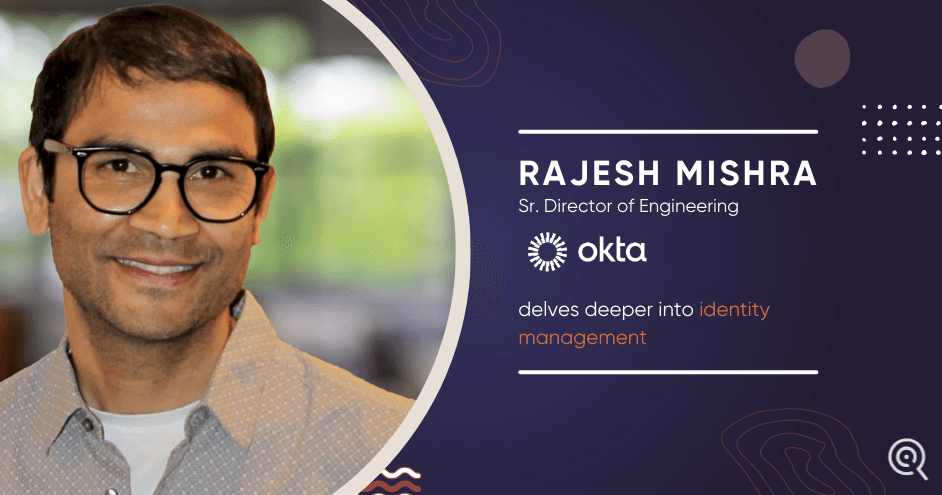
Rajesh Mishra shares,
Okta is an identity security company, when people want to do any online or digital transaction, everybody is at risk. A digital persona is when a person uses a traditional desktop, laptop or mobile application. This persona may face problems as fraudulent activities can mess up digital systems. Privacy and cyberattacks are crucial and require a highly focused approach. It is about digital identity and the resources that are being accessed. Resources that can be accessed or the ones that have information are files, dropboxes, googles drives, and applications such as Slack or Salesforce. An element of trust is necessary when it comes to security. What is of question is if the user behind these screens is a human or a bot? Once the element of trust is established, the line of access to information is secured, Okta allows the user to make the necessary transactions.
Primarily, Okta caters to two audiences - B2B and B2C. B2B is what we call the “workforce identity” and B2C is what we call the “customer identity”. A use case of the former is - employees in a large organization will have lifetime (tenure of their employment) access to the resources within the company. The latter is the case where for instance, a consumer uses Uber or banking services. When that happens, the consumer is trying to access a limited amount of resources of the respective company.
When it comes to the technical stack, Okta is a 12-13 years old modern SaaS platform organization. In order to build both workforce and customer identity, it uses a lot of other platform building blocks, such as, hosting on AWS, and using their storage, network and database services. Okta’s basic building blocks, i.e., the software are written in Java and additionally there are other languages used to write codes for the devise-level software. The initial identity journey starts at this software level.
Okta uses a lot of application frameworks like UI among others. The company uses a lot of business software and developer tools on a regular basis, and Atlassian software is one of them. For heightened productivity, Google’s G-suite is used for general communications and emails. Zoom and Slack are other popular platforms used within the organization. It isn't just one software but a combination of an array of software that runs simultaneously.
What drives the system?
At a high level what is needed is a directory of the digital user representation, we model that in the directory software. The users are represented in these directories. Identity management has many protocols to follow and thus we have built our systems in a manner that applications and protocols are met. As a platform service company, we need to defend ourselves from bad actors. Thus we put a lot of effort to design disaster recovery and make the software extremely resilient and redundant.
Recently, Okta faced a highly coordinated attack from a bad actor who was trying to make money on the company. We noticed a discrepancy in our telephonic services, our system detected these activities and was able to stop them. This meant denying these requests that came our way. The system is automated, it flagged the act and within minutes of detecting it, the team was able to notice that it was suspicious activity. Importantly, besides the denial of service that led to a prevention of the act for the users of the company, we also succeeded in reducing the cost because it is a massive cost if it wasn't prevented in the first place.
Watch the full podcast, here:
Authored by Richa
For more information, please reach out to the Marketing Team.


